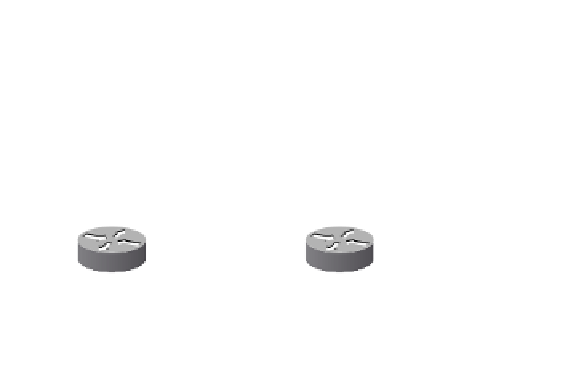Information Technology Reference
In-Depth Information
DR and BDR selection is based on an OSPF DR interface priority. The default value is 1 and
the highest priority determines the DR. If there is a tie, it uses the numerically highest router ID
(RID). Routers with a priority of 0 are not considered for DR/BDR selection.
Looking at Figure 8-3, Router A is configured with a priority of 10, and Router B is configured
with a priority of 5. Assuming that these routers are turned on simultaneously, Router A
becomes the DR for the Ethernet network. Router C has a lower priority and becomes adjacent
to Router A and Router B but not to Router D. Router D has a priority of 0 and is not a candidate
to become a DR or BDR. The dotted lines in Figure 8-3 show the adjacencies in the network.
Designated Routers (DRs)
Figure 8-3
Router C
DR Other
Priority 1
Router D
DR Other
Priority 0
Dotted lines
show adjacencies.
Router A
DR
Priority 10
Router B
BDR
Priority 5
If a new router is introduced to the network with a higher priority than the current DR and BDR,
it does not become the selected DR unless both the DR and BDR fail. If the DR fails, the current
BDR becomes the DR.
The OSPF interface priority can be changed with the following interface command:
ip ospf priority value
The
value
argument is the priority assigned to the router for that interface. The range is from 0
to 255; 0 means that the router is not a DR or BDR candidate.
OSPF Stub Area Types
OSPF provides support for stub areas. The concept is to reduce the number of interarea or
external LSAs that are flooded into a stub area. RFC 2328 defines OSPF stub areas. RFC 1587
defines support for NSSA. Totally stubby areas are not defined in an RFC, but Cisco and other
vendors' routers do use them.




























Search WWH ::

Custom Search